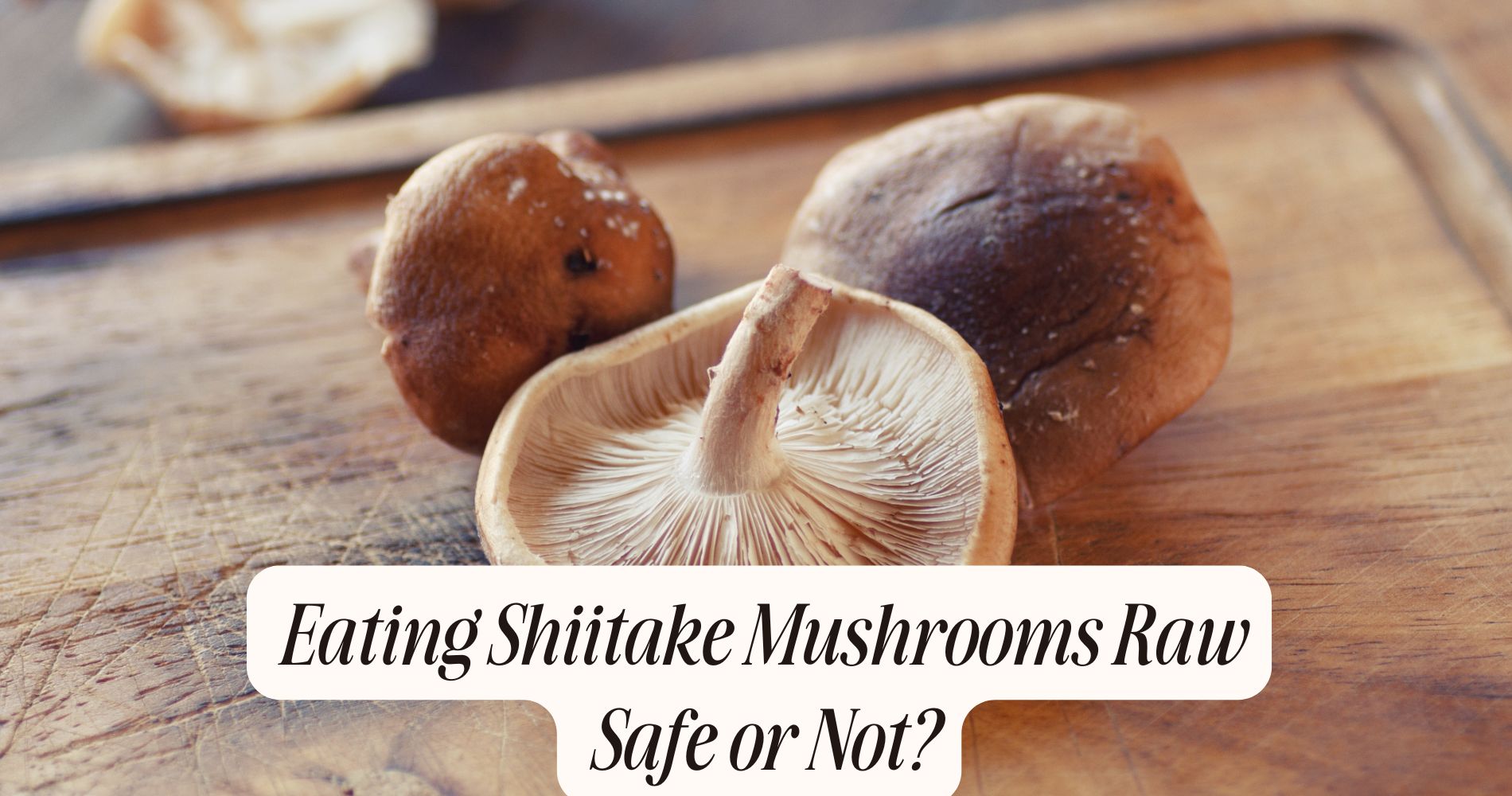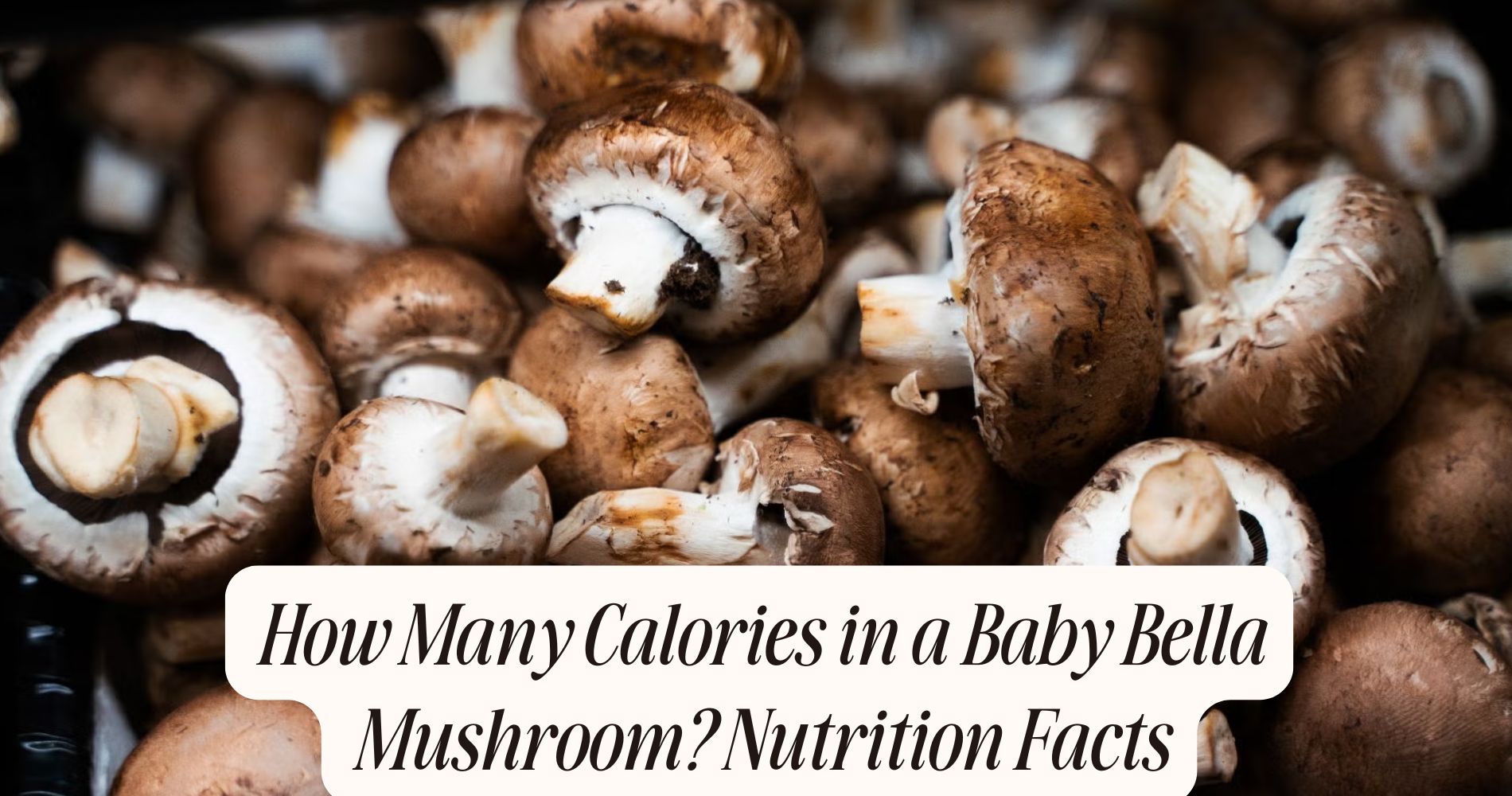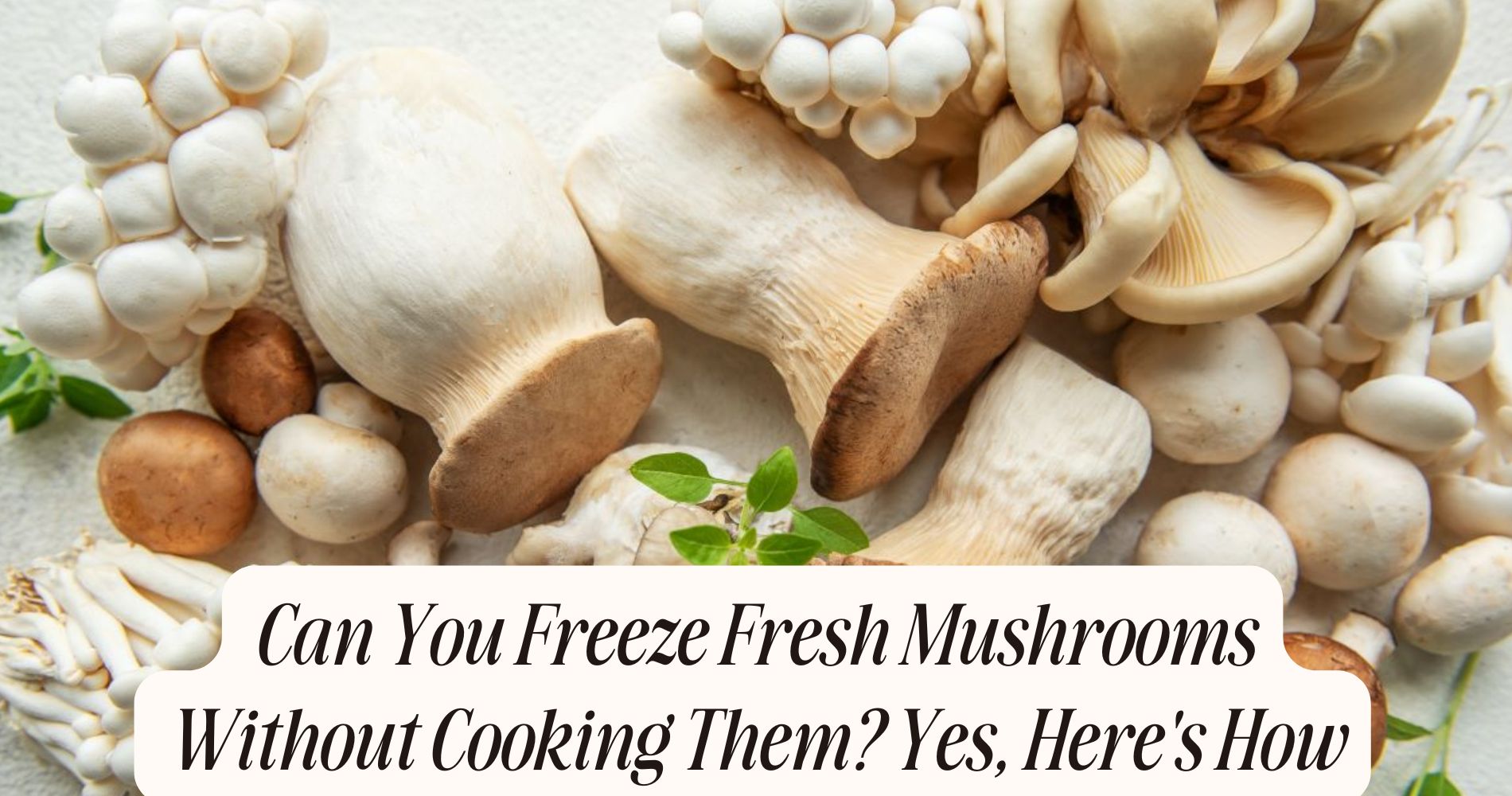
Eating Shiitake Mushrooms Raw Safe or Not?
Eating shiitake mushrooms raw may seem appealing for preserving certain nutrients, but it comes with risks. Raw shiitakes contain compounds that can trigger allergic reactions or digestive discomfort in some people. Cooking not only enhances their flavor and texture but also improves digestibility and reduces potentially harmful substances. While raw consumption may retain more of some vitamins, the safety concerns often outweigh the nutritional perks. If you're thinking about adding raw shiitakes to your diet, it's important to consider these factors carefully. Read on to learn more about their benefits, risks, and the best ways to prepare them.
Understanding Shiitake Mushrooms
Shiitake mushrooms, known for their rich umami flavor and meaty texture, are a popular choice in various cuisines around the world.
With several shiitake varieties available, each presents unique characteristics that appeal to different culinary preferences. Commonly cultivated in regions like Japan and China, shiitake mushrooms thrive on hardwood logs and sawdust, making mushroom cultivation an accessible practice for both farmers and enthusiasts.

The cultivation process typically takes several months, involving inoculating the substrate with shiitake spores and maintaining ideal conditions for growth. Understanding the various shiitake varieties and their cultivation methods can enhance your appreciation for these mushrooms, whether you’re using them in stir-fries, soups, or exploring the possibility of enjoying them raw.
Nutritional Profile of Shiitake Mushrooms
Shiitake mushrooms are known for their impressive nutrient density, offering a variety of vitamins and minerals in a low-calorie package.
When you incorporate them into your diet, you'll benefit from their antioxidant properties and potential immune-boosting effects.
Understanding their nutritional profile can help you appreciate how this mushroom contributes to overall health.
Nutrient Density Overview
Mushrooms, particularly shiitake, boast an impressive nutritional profile that makes them a valuable addition to your diet.
These mushrooms are low in calories yet rich in essential nutrients, including B vitamins, copper, and selenium. Shiitake mushrooms are known for their high fiber content, which can aid in nutrient absorption and digestion.
Compared to other mushroom varieties, shiitake offer unique compounds like lentinans, which may support immune health. They also provide antioxidants that help combat oxidative stress.
Incorporating shiitake into your meals can enhance your nutrient intake while benefiting overall health. By understanding their nutrient density, you can make informed choices about including shiitake mushrooms in your diet.
Health Benefits Explained
When you incorporate shiitake mushrooms into your diet, you’re not just adding unique flavors; you’re also gaining a wealth of health benefits.
These mushrooms are packed with essential nutrients, including B vitamins, copper, and selenium. Shiitake varieties, particularly the fresh ones, are low in calories and high in fiber, promoting digestive health.
Their antioxidant properties may help boost your immune system and combat inflammation. You can easily create culinary pairings with shiitake mushrooms, whether in stir-fries, soups, or salads.
Potential Risks of Eating Raw Shiitake Mushrooms
Although many people enjoy the unique flavor of raw shiitake mushrooms, consuming them can pose certain health risks. One significant concern is the potential for raw shiitake allergies. Some individuals may experience allergic reactions, which can include symptoms like skin rashes or respiratory issues.

Additionally, raw shiitake mushrooms contain compounds that can lead to digestive issues, such as bloating or stomach upset. These problems arise because the mushrooms may be difficult for some people to digest in their raw state. If you have a history of mushroom allergies or gastrointestinal sensitivity, it's wise to be cautious.
Cooking shiitake mushrooms can help break down these compounds, reducing the likelihood of adverse reactions. Always consult a healthcare professional if unsure about dietary choices.
Cooking Shiitake Mushrooms: Benefits and Methods
Cooking shiitake mushrooms not only enhances their flavor but also greatly improves their digestibility and nutritional benefits. When you cook shiitake varieties, the heat breaks down tough cell walls, making nutrients more accessible.
Techniques like sautéing, grilling, or simmering in soups can bring out their rich umami taste while reducing potential toxins found in raw mushrooms. For example, sautéing in olive oil with garlic can elevate your dish while providing healthy fats.
Incorporating shiitake mushrooms into your meals can boost vitamin D, B vitamins, and minerals like copper and selenium. Experimenting with different cooking methods can also add diversity to your meals, enhancing both flavor and health benefits.
How to Safely Prepare Shiitake Mushrooms
To safely prepare shiitake mushrooms, you need to start with proper cleaning techniques to remove any dirt or contaminants.
Afterward, you can explore various cooking methods that enhance their flavor while ensuring they’re safe to eat.
Understanding these steps is essential for enjoying shiitake mushrooms in their best form.
Cleaning Shiitake Mushrooms Properly
When you're ready to enjoy shiitake mushrooms raw, it's essential to clean them properly to guarantee safety and enhance their flavor.
Start by rinsing the mushrooms under cold running water to remove any dirt or debris. Avoid soaking them, as this can lead to water absorption, affecting their texture and taste.
Use a soft brush or cloth to gently scrub the caps and stems, focusing on crevices where dirt might hide. After cleaning, pat them dry with a clean towel.
Proper cleaning techniques not only improve mushroom safety but also elevate your culinary experience. Always inspect for any signs of spoilage, discarding any mushrooms that appear slimy or discolored.
Enjoy your fresh shiitake mushrooms safely!
Cooking Methods Explained
While shiitake mushrooms are delicious raw, cooking them brings out their umami flavor and guarantees they’re safe to eat. Various cooking techniques can enhance their taste and texture.
Sautéing is a quick method that caramelizes the mushrooms, intensifying their flavor. Grilling adds a smoky element, while roasting in the oven allows for a rich, deep flavor enhancement.
You can also simmer shiitake in soups or stews, where they absorb the surrounding flavors and contribute their own. Remember to cook them until they’re tender, which assures any potential toxins are neutralized.

Taste and Texture: Raw vs. Cooked
Although shiitake mushrooms are often cooked to enhance their flavor and texture, eating them raw offers a distinctly different experience. The raw shiitake flavor is earthy and slightly nutty, providing a fresh taste that many find appealing.
In contrast, when cooked, shiitake mushrooms develop a richer, more complex flavor profile, often complemented by the caramelization process. The cooked shiitake texture becomes tender and meaty, making it a satisfying addition to various dishes.
However, the crunchy, firm texture of raw shiitake can add a unique bite to salads and other fresh preparations. Ultimately, your choice between raw and cooked shiitake mushrooms will depend on your personal preference for flavor and texture in your culinary creations.
Culinary Uses for Raw Shiitake Mushrooms
Raw shiitake mushrooms can be a versatile ingredient in various culinary applications. You can easily incorporate them into raw mushroom salads, adding a unique umami flavor and a chewy texture.
Slice them thinly and toss them with fresh greens, cherry tomatoes, and a light vinaigrette for a revitalizing dish. Another popular use is in shiitake sushi, where you can use raw shiitake slices as a filling or topping. Their earthy taste complements rice and seaweed beautifully.
Additionally, you might experiment with them in wraps or as a garnish for soups. By using raw shiitake mushrooms, you enhance your meals with both flavor and visual appeal, making your culinary creations stand out.
Health Benefits of Cooked Shiitake Mushrooms
Cooking shiitake mushrooms not only enhances their flavor but also reveals a range of health benefits. When you cook shiitakes, their bioavailability increases, allowing your body to absorb crucial nutrients more effectively.
These cooked shiitakes are rich in polysaccharides, particularly lentinans, which can help boost your immune system and fight off infections. They also contain essential vitamins and minerals, including B vitamins, copper, and selenium, which promote overall health.
Additionally, cooked shiitakes may support heart health by lowering cholesterol levels and improving circulation. By incorporating cooked shiitakes into your meals, you’re not just enjoying a delicious dish but also investing in your well-being with these impressive health benefits.
Recommendations for Consumption
When considering shiitake mushrooms, it's important to weigh their nutritional benefits against potential risks of raw consumption.
While eating them raw can provide certain vitamins and minerals, cooking often enhances their flavor and digestibility.
Understanding these factors can help you make informed choices about how to enjoy shiitakes.
Nutritional Benefits of Shiitakes
While many people enjoy shiitake mushrooms cooked, consuming them raw can offer unique nutritional benefits.
Raw shiitake varieties retain higher levels of certain vitamins, such as B vitamins and vitamin D, which are often diminished through cooking. Additionally, you'll find that raw shiitakes provide antioxidants like ergothioneine, which can help combat oxidative stress in your body.
Including raw shiitakes in your diet also enhances your fiber intake, promoting gut health. You can enjoy these mushrooms in various culinary pairings, such as salads, sushi, or as a topping for sandwiches.

Potential Risks of Consumption
Consuming raw shiitake mushrooms does come with some potential risks that you should be aware of. One concern is raw mushroom toxicity, which can lead to gastrointestinal issues if consumed in large amounts.
Although shiitake mushrooms are generally safe to eat, some individuals may experience shiitake allergy concerns, resulting in symptoms like skin rashes or respiratory difficulties. If you're allergic to other fungi, you might be at a higher risk for these reactions.
Always consider your own health conditions and consult with a healthcare professional if you're unsure about eating raw shiitakes. To minimize risks, it's wise to limit your intake and monitor for any adverse reactions, especially if you're trying them for the first time.
Cooking vs. Raw Benefits
Although shiitake mushrooms can be enjoyed both raw and cooked, each method offers distinct benefits that may influence your choice.
Raw consumption preserves nutrients like vitamin C and certain antioxidants, which can be diminished by heat. However, cooking techniques, such as sautéing or steaming, enhance the bioavailability of other compounds, like polysaccharides, known for their immune-boosting properties.
Additionally, cooking can reduce potential toxins present in raw shiitake, making them safer to eat. If you prefer a crunchy texture and fresh flavor, raw shiitake might suit you. Conversely, if you're looking for deeper flavors and easier digestion, opt for cooked preparations.
Ultimately, balancing both methods in your diet can provide the best of both worlds.
Final Thoughts on Eating Shiitake Mushrooms Raw
When considering the consumption of raw shiitake mushrooms, it’s essential to weigh both their nutritional benefits and potential health risks.
Raw consumption of shiitake mushrooms can offer various vitamins and minerals, but it also poses safety concerns. Some individuals may experience allergic reactions or digestive issues when consuming them raw.
Cooking shiitake mushrooms not only enhances their flavor but also improves digestibility and eliminates potential pathogens, ensuring better mushroom safety.
If you choose to eat them raw, it's vital to source high-quality mushrooms and wash them thoroughly.
Ultimately, it's a personal choice, but understanding the risks and benefits can help you make an informed decision about incorporating raw shiitake mushrooms into your diet.
Skip the Risks, Keep the Benefits: SUPER MUSHROOM GUMMIES
If you're questioning whether eating shiitake mushrooms raw is safe, there's a simpler way to enjoy their benefits without the risk—Well Gummies' SUPER MUSHROOM GUMMIES. These vegan, chewable gummies combine 10 functional mushrooms, including shiitake, in a delicious wild berry flavor. You’ll get natural energy, sharper focus, and immune support—without the prep or potential side effects of raw mushrooms. No jitters, no crash—just smooth, balanced wellness in every bite. Make mushroom nutrition safe, easy, and tasty with Well Gummies!
Frequently Asked Questions
Can I Grow Shiitake Mushrooms at Home?
Yes, you can grow shiitake mushrooms at home through shiitake cultivation. Start with logs or kits, ensuring proper moisture and temperature. Home gardening provides a rewarding experience, yielding fresh mushrooms for your culinary creations.
How Do I Store Fresh Shiitake Mushrooms?
To store fresh shiitake mushrooms, use proper storage techniques like placing them in a paper bag. For ideal freshness tips, keep them in the fridge and avoid airtight containers to prevent moisture buildup and spoilage.
Are There Vegan Recipes Using Raw Shiitake Mushrooms?
You can create delicious vegan recipes using raw shiitake mushrooms. Try raw shiitake salads for a revitalizing crunch, or whip up shiitake dips to enhance your appetizers. Both options offer unique flavors and nutritional benefits.
What’S the Best Way to Slice Shiitake Mushrooms?
When slicing shiitake mushrooms, use a sharp knife for clean cuts. Try different slicing techniques, like thin or thick slices, to enhance mushroom flavors in your dishes. Consistency in size guarantees even cooking and presentation.
Can I Substitute Shiitake Mushrooms for Other Types?
You can definitely substitute shiitake mushrooms with other types, like cremini or portobello, though you’ll miss shiitake benefits. Consider cooking alternatives to maintain flavor and texture, ensuring your dish remains delicious and satisfying.
Conclusion
To summarize, while eating raw shiitake mushrooms isn't inherently dangerous, it does carry some risks, including potential allergic reactions and digestive issues. Cooking these mushrooms not only enhances their flavor but also improves their nutritional benefits and reduces any harmful compounds. If you choose to enjoy them raw, make sure they're fresh and properly cleaned. Ultimately, incorporating cooked shiitake mushrooms into your diet is a safer and more nutritious option for most people.




